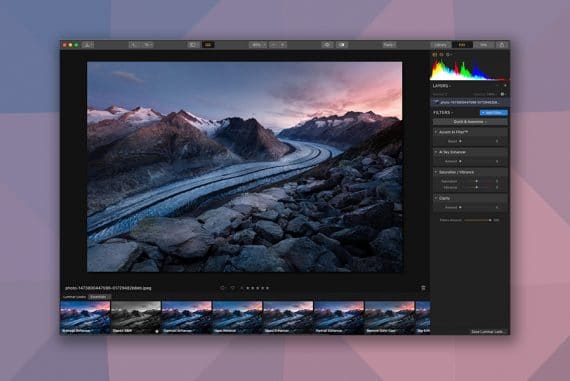
What to do when Lightroom Keeps Crashing
If Lightroom keeps crashing, you're probably pretty annoyed! Here are 11 solutions to your problem so you can get up and running with your photos again.
Lightroom | Software | By Usnea Lebendig | Last Updated: November 18, 2023
You’ve tried rebooting, you’ve even turned your computer off and on a couple of times, but Lightroom keeps crashing.
Adobe Lightroom in general is a stable piece of software. As the main processing hub of thousands of our precious images, it usually does a great job… but occasionally, disaster strikes!
Assuming you’re on Adobe’s Creative Cloud plan (i.e. you have a current subscription and are not running Lightroom 5 or 6), here are a few tried-and-true things you can do to get everything up and running again.
Want to try something else?
If you’re tired of Lightroom crashing and want to try an alternative image editor, tap here to see the best Lightroom alternative >>
Remember to use code shotkit10neo to save $10.
Popular course reveals the simple tricks to getting incredible results with Lightroom in record time. Give Your Photos The Look They Deserve!
![]()
Table of Contents
11 Solutions when Lightroom keeps Crashing
1. Make Sure You’re Running the Latest Version of Lightroom
It may be what you’re going through is a Lightroom problem or bug that others are experiencing. If that’s so, Adobe probably already knows about it and is either working on a fix or has already put one out there.
You can check for the updates by going to Help menu > Check for Updates.
It’s also important to keep your OS updated, as Adobe’s software upgrades are based on the current operating systems out there.
That being said, if you have a Mac it’s best to wait a while before upgrading to Catalina. While compatibility issues are minor for Lightroom compared to Photoshop, they do exist.
Finally, make sure that all your drivers and are up-to-date, especially graphics card drivers but also any tablet or mouse drivers you might be using. To do this you’ll need to go direct to the manufacturer.
2. Optimize the Catalog
Optimizing the catalog tells Lightroom to examine the data structure of the catalog and make sure that it is both correct and succinct.
It’s unlikely that your catalog is what’s causing the crashes, but if it is, this should take care of it. It will also ensure that your catalog continues to operate smoothly once you get Lightroom up and running again.
To optimize the catalog, go to the File menu > Optimize Catalog and give it a moment to do its thing.
Once it’s completed reboot Lightroom and see if the crashing continues.
3. Turn off the GPU
If you’ve already done steps 1-2 and you’re still having problems, it could very well be that your graphics card driver just isn’t playing well with Lightroom.
Buggy or incompatible graphics card drivers have long been one of the biggest headaches of Lightroom users, causing everything from performance issues to repeated crashing.
To turn off the GPU on a Mac, go to either
- (Mac) Lightroom Classic > Preferences > Performance
- (Windows) Edit > Preferences > Performance
and then uncheck the Enable Graphics Processor box. This can also help make Lightroom faster.
If that fixes the problem you might want to look into getting a GPU that works with Lightroom. You can find a complete list on Adobe’s Lightroom graphics processor (GPU) troubleshooting & FAQ page.
4. Reset the Preferences
Resetting the preferences can often fix all sorts of bugginess in Lightroom. It’s a bit of a pain to do, but not nearly so painful as having continually Lightroom crash.
- Using the Keyboard Shortcut
- Quit Lightroom Classic
- Hold down the appropriate keys while relaunching: Mac: Shift + Option + Delete; Windows: Shift + Alt.
- Click Reset Preferences (Mac) or Yes (Win) when the dialogue box asks whether you want to reset the preferences.
- Resetting the Preferences Manually
If you choose this option, it’s best to move or rename your old preferences file instead of deleting it. This will save you the hassle of having to manually reset all of your custom preferences if this step doesn’t fix your crash problems.
1. Navigate to Lightroom’s Preferences file:
On a Mac: /Users/[user name]/Library/Preferences/
On Windows 7,8,10: Users\[user name]\AppData\Roaming\Adobe\Lightroom\Preferences\
2. Drag the following file to the Trash (Mac) or the Recycle Bin (Windows)
Mac: com.adobe.LightroomClassicCC7.plist
Windows: Lightroom Classic CC 7 Preferences.agprefs
3. Restart your computer and launch Lightroom.
Again, if this doesn’t fix your problem you can always put the old preferences file back. Just make sure it has the right name.
Note: The user Library file is hidden by default on Mac OS X 10.7 and later. For temporary access to the user Library file, press Option and choose Go > Library in the Finder
Like the Library Folder in the Mac OS, the AppData folder is hidden by default in Windows. To view it, choose Start > Control Panel > Appearance and Personalization > Folder Options. In the Advanced area of the View tab, make sure that Show Hidden Files and Folders is selected. Click OK.
5. Try a New Catalog
If resetting the preferences doesn’t help, try creating a new catalog to make sure your catalog’s not corrupted.
This isn’t to replace your catalog, so don’t delete your working catalog or start working in this one. It’s only to test whether your problem is catalog-specific.
To do so:
- Go to File menu > New Catalog.
- If you can’t open Lightroom to access the menu, hold down Ctrl (Win)/Opt (Mac) while restarting Lightroom. When the button appears, click Create New Catalog.
- Choose a location for the temporary catalog (i.e. the desktop).
- Import some photos into this new catalog to make sure that everything is working as expected.
If everything works, the problem is likely specific to your catalog. Don’t worry, this can usually be fixed!
- To return to your normal catalog, go to File menu > Open Recent.
6. Uninstall, Reboot, and Reinstall
If Lightroom started crashing just after an update, this step can often make all the difference. Its especially true if you didn’t reboot after installing the update, as the installation process may not have fully completed.
- Reboot the computer.
- Uninstall Lightroom Classic.
- Reboot the computer.
- Reinstall Lightroom Classic using the Adobe Creative Cloud app.
- Reboot the computer again.
How about if you’ve had enough of Lightroom altogether? See our article: how do I completely remove Adobe Creative Cloud?
7. Check for Operating System and Hardware Problems
Lightroom requires a lot of your system’s resources to operate – more than most programs. As a result it often finds damaged RAM, flagging hardware, and operating system issues that other apps don’t flush out.
There are plenty of apps, that will check your RAM for you. Memtest is one, but there are many others.
You should also check your boot drive and hard drives to make sure they have enough space. (Lack of space can cause all manner of problems in Lightroom.)
8. Make Sure You Don’t Have Any Corrupted Presets or Fonts
Corrupted presets and fonts can definitely cause some weirdness in Lightroom’s performance. Here’s how to check to see if they’re the issue.
- Mac
1. Find the Presets Folder either by going to Lightroom menu > Preferences > Presets tab and selecting Show Lightroom Presets Folder or navigate directly to it: Macintosh HD / Users / [your username] / Library / Application Support / Adobe / Lightroom /
Note: Make sure you can see the Library folder. (See manually resetting the preferences in tip 4.)
2. Select the Lightroom Presets folder and move it to your desktop or some other easily retrievable place.
3. Reboot your computer then restart Lightroom.
If this solves the problem, you’ll need to narrow down which presets are corrupt. To do this, copy the presets back a couple at a time and try relaunching Lightroom after each go. It’s time consuming, yes, but consider it like an elimination diet – add things back in slowly to find out what you’re allergic to.
If it doesn’t solve the problem, copy the Preset Folders back the way they were when you started. That will overwrite the default preset folders that Lightroom automatically created in the reboot.
Corrupted fonts have also been known to cause issues, primarily in the Print and Book modules. They aren’t specific to Lightroom, so you’ll have to manage them through your operating system. The instructions are a bit different for each MacOS so it’s best to just search under “uninstall font” and the name of your operating system.
- Windows
1. Find the Presets Folder either by going to Lightroom menu > Preferences > Presets tab and selecting Show Lightroom Presets Folder or by navigating directly to it: C:\Users\[your username]\AppData\Roaming\Adobe\Lightroom\
Note: Make sure you can see the AppData folder. (See manually resetting the preferences in tip 4.)
2. Close Lightroom.
3. Select all subfolders (e.g. Develop Presets, Print Templates, etc.) in the Lightroom folder (excepting the Preferences folder if you’ve already checked it).
4. Move these subfolders (e.g. Develop Presets, Print Templates, etc.) to another location (i.e. the Desktop).
5. Restart Lightroom.
9. Try a Clean User Account
Sometimes issues are specific to the user account you’re using on your computer. If that’s happening in your case, you should be able to launch and run Lightroom from a clean user account.
If you’ve never created a clean user account before, you can find instructions here for Windows and here for Macs.
10. Get Customer Support
If none of these tips solve your problem, you can always try reaching out in the Adobe Lightroom forums or contacting Adobe directly.
11. Try Other Image Editing Software
If you’ve tried all the tips above and don’t want to waste your time with customer support… or you’re simply tired of paying for the monthly subscription fees, remember that there a few decent Lightroom alternatives to choose from.
Final Words
For those of us who rely on Lightroom, having it continually crash can be seriously debilitating. Hopefully, these steps will help you troubleshoot your issue and get you back on your feet without having to cancel your Lightroom subscription altogether.
Obviously, if you’re running Lightroom 5 or 6 there’s going to be a point where they no longer work. They’ll stop working immediately if you have a Mac and you upgrade to Catalina. Later, perhaps, on Windows, but eventually all good things come to an end and you’ll be forced to decide whether to pay a subscription or move to different software.
This guide on how to buy Lightroom should help, but either way, I hope these steps keep your system up and running. Let me know how it goes.













